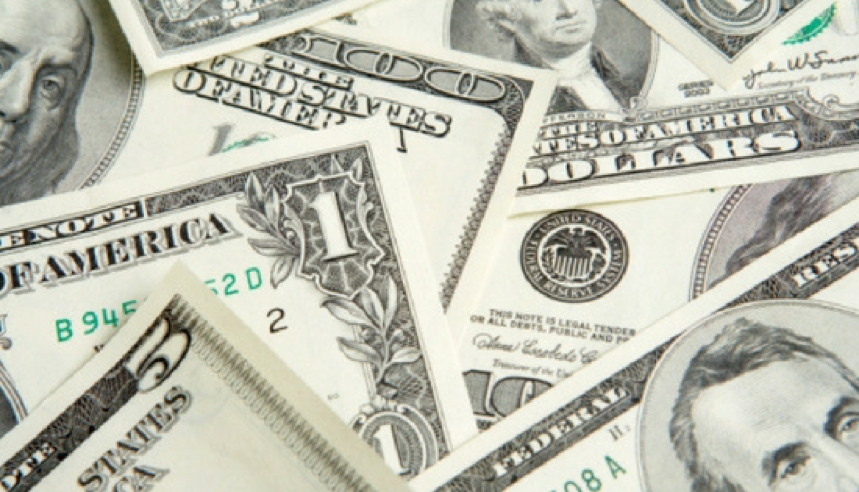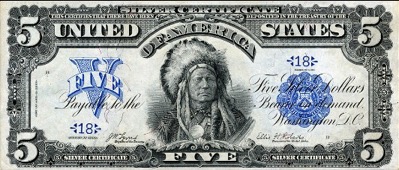Currency vs Money: What’s the Difference?
If you look up the words “currency” and “money” in a thesaurus, each word will probably be listed as a suitable linguistic substitution for the other; however, their economic function is almost completely opposite. Understanding the difference between currency and money is critical to making smart decisions about preserving your wealth.

Currency
For the majority of people, currency – more specifically fiat currency – is “cold hard cash.” They are the dollars, pesos, or yen you keep in your wallet or purse. As such, currencies serve the function of being a country’s primary medium of exchange, in the form of coins or paper.
In the premodern era, countries moved from precious metals to currency as a way to facilitate exchange among the economies’ participants. Gold, silver, and other precious materials were typically cumbersome and hard to transport. There was a need for a more portable alternative that served the same function and, most importantly, was backed by precious metals, gems, etc.
Banknotes were once a type of currency backed by gold and silver in the US. As such, banknotes could be exchanged for “legal tender” (i.e. gold and silver) at any time by the owner. US silver certificates, for example, could be exchanged for their face value in silver. The US adopted the gold standard in 1879.

Having a currency backed by an actual precious metal helped lend credibility to the governments that issue it. It facilitated the trust these institutions needed to make their currency system work. People accepted currencies because they knew their wealth was secured in (i.e. backed by) precious metals. On top of that, paper and cheaper metal coins were an effective way to conduct business.
Gold Standard Be Gone!
In 1933, President Roosevelt and Congress began taking the US off the gold standard with a resolution nullifying the right of citizens to demand payment in gold for their currencies. People were also required to deliver all gold coin, gold bullion, and gold certificates owned by them to the Federal Reserve for a pre-set price ($20.67) per ounce. The price would later be set to $35 per ounce.
By hoarding all of the gold and controlling its price, the Federal Government could now more effectively control how much money was in circulation. Like today’s monetary policy, the Keynesian economic theory of creating inflation to stimulate the economy was now in full force within the Roosevelt administration. The irony of the situation is that abandoning the gold standard was done to build confidence in the economic system.
In 1971, President Nixon announced the US was no longer in the business of converting dollars to gold at the $35 per ounce fixed value, and the gold standard was abandoned completely. With the absence of a gold-backed dollar, US citizens inherited a fiat currency system backed by nothing but the trust in the government.
Money
Considering that a fiat currency’s value as being backed by nothing tangible, the idea of money can be contrasted against it. Money or “commodity money” can literally be any type of commodity, from seashells to stones, which can serve as a medium of exchange for goods, services, and payment of debts. Unlike government decreed and issued fiat currency, commodities like gold and silver have an intrinsic or “use value.”
The value of precious metals is inherent in their scarcity. Unlike fiat currency, which can be printed at the government’s whim, gold and silver exist in a finite amount. There is only so much to be mined and sold. Also, unlike fiat currencies and their economic systems, gold is immutable. It can’t be created or destroyed, but can only change shape. It was created at the beginning of the universe and will continue to exist forever. Try applying that standard to the paper currency in your wallet.
For thousands of years, gold and silver have served as money because of these unique characteristics. Removing our currencies from their connection to precious metals has detached our faith in their value, and allowed governments and financial institutions to artificially alter their value when they see fit. Fiat currencies come and go with the rise and fall of nations, but gold and silver will always remain.
The difference between currencies and money should now be clear enough to stress the importance of maintaining your wealth by buying gold and silver.
Get Peter Schiff’s latest gold market analysis – click here – for a free subscription to his exclusive weekly email updates.
Interested in learning how to buy gold and buy silver?
Call 1-888-GOLD-160 and speak with a Precious Metals Specialist today!




 Since Nayib Bukele became president of El Salvador, El Salvador has been in American media and global political discussion more than ever. While much of the attention focuses on Bukele’s mass incarceration of gang members and a decline in homicide of over 70%, Bukele has also drawn attention to his favoritism towards Bitcoin and how he […]
Since Nayib Bukele became president of El Salvador, El Salvador has been in American media and global political discussion more than ever. While much of the attention focuses on Bukele’s mass incarceration of gang members and a decline in homicide of over 70%, Bukele has also drawn attention to his favoritism towards Bitcoin and how he […] With gold hitting yet another awe-inspiring all-time high in the wake of Powell’s remarks reassuring markets (more or less) to expect rate cuts in 2024, a few analysts are pointing out risk factors for a correction — so is there really still room to run?
With gold hitting yet another awe-inspiring all-time high in the wake of Powell’s remarks reassuring markets (more or less) to expect rate cuts in 2024, a few analysts are pointing out risk factors for a correction — so is there really still room to run? Gold hit a new all-time nominal high, surpassing the previous record set in December of the previous year. The precious metal’s price reached approximately $2,140, indicating a robust and continuing interest in gold as a safe-haven asset, despite a rather peculiar lack of fanfare from the media and retail investors. This latest peak in gold […]
Gold hit a new all-time nominal high, surpassing the previous record set in December of the previous year. The precious metal’s price reached approximately $2,140, indicating a robust and continuing interest in gold as a safe-haven asset, despite a rather peculiar lack of fanfare from the media and retail investors. This latest peak in gold […] The gold price has been surging, with unprecedented central bank demand gobbling up supply. It has been a force to behold — especially as US monetary policy has been relatively tight since 2022, and 10-year Treasury yields have rocketed up, which generally puts firm downward pressure on gold against USD.
The gold price has been surging, with unprecedented central bank demand gobbling up supply. It has been a force to behold — especially as US monetary policy has been relatively tight since 2022, and 10-year Treasury yields have rocketed up, which generally puts firm downward pressure on gold against USD.  Total gold demand hit an all-time high in 2023, according to a recent report released by the World Gold Council. Last week, the World Gold Council (WGC) released its Gold Demand Trends report, which tracks developments in the demand for and use of gold around the world. Excluding over-the-counter (OTC) trade, 2023 gold demand fell slightly from 2022 […]
Total gold demand hit an all-time high in 2023, according to a recent report released by the World Gold Council. Last week, the World Gold Council (WGC) released its Gold Demand Trends report, which tracks developments in the demand for and use of gold around the world. Excluding over-the-counter (OTC) trade, 2023 gold demand fell slightly from 2022 […]